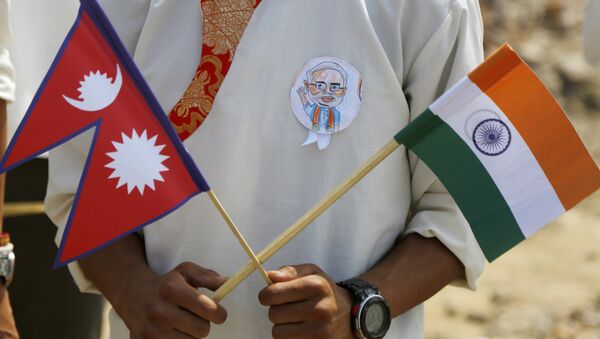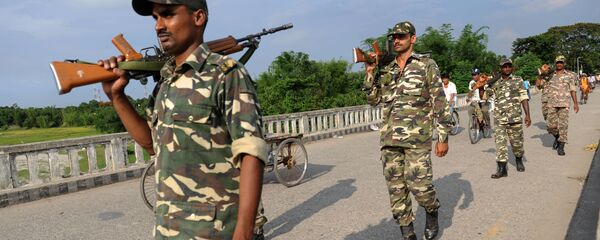A few days after claiming territories in the Indian state of Uttarakhand, Nepal is now eyeing areas in Bihar, with which it shares a 700km-long border, as its authorities stopped officials from the Water Resources Department (WRD) of Bihar from carrying out embankment-related repair work on the border, claiming the area as part of its territory.
The officials were carrying out flood-prevention related fortifications of an embankment on Lalbakey River in Bihar's East Chamaparn district. The halt on embankment repair work, which was built 20 years ago, has raised the threat of floods in the Indian state in the forthcoming monsoon.
Bihar's Water Resources Minister Sanjay Kumar Jha said: "The Gandak barrage in Valmiki Nagar has 36 gates and 18 of those are on Nepal side. They have installed barriers there, which had not happened before. On Sunday, 150,000 cusecs of water were released. If the flood-prevention material and officers cannot reach there, in that case, there will be a grave danger.”
Emerging Anti-India Current
Amid the intense border stand-off between India and China since the last week of April, which escalated into a violent face-off on 15 June, the Communist Party of Nepal, an outlawed political group, has demanded that Nepali citizens in India’s Gorkha Regiment not fight against China on behalf of India.
“Amid India-China border tension followed by the killing of Indian troops in the Galwan Valley, India has recently asked Nepali nationals in the Gorkha Regiment who are currently on home leave to rejoin duty. This means the Indian side is preparing to deploy our fellow Nepali nationals in the Indian Army in their battle against China,” the statement from the party said.
It highlighted Nepal’s “non-aligned foreign policy”, which implies that the deployment of Gorkha soldiers by India would contradict the decades-old foreign policy goals of the Himalayan nation. “Nepal is an independent nation and its youth working for the military of one country should not be used against another,” the statement said.
Over 25,000 Nepalese currently serve in the Indian Army's seven Gorkha Rifles, each of which has five to six battalions (800 to 1,000 soldiers each), drawing from Rais and Limbus of eastern Nepal and Gurungs and Magars from the west.
Not So Silent
Furthermore, since the Kalapani-Limpiyadhura-Lipulekh area has been declared as belonging to Nepal through a constitutional amendment, local media reports in India are suggesting that the FM channels on the India-Nepal border in Uttarakhand have begun to give weather bulletin for the said areas.
Nepalese channels, which are heard on both sides of the border, are reportedly bombarding the airwaves with anti-India songs, which talk about claiming “their land” from India, referring to Kalapani-Limpiyadhura-Lipulekh.
Another Political Move
Under an amendment bill to the Citizenship Act 2063 (Hindu Calendar), Nepal’s ruling party has decided to make it mandatory for a foreign woman married to a Nepali man to wait for seven years to acquire a naturalised citizenship certificate.
Given the number of marriages that take place between families of India and Nepal, many believe that the move is targeted against India. Recently, India’s defence minister had described the relationship between the two countries as being bound by roti and beti (ties of bread and bride).
The relations between India and Nepal began to go downhill from 8 May, when India's Minister of Defence Rajnath Singh inaugurated the strategically important 80km road connecting the Lipulekh pass with Dharchula in Uttarakhand. Along with changing its map, Nepal has also set-up an army post at Chharung manned by the country's armed police force.





